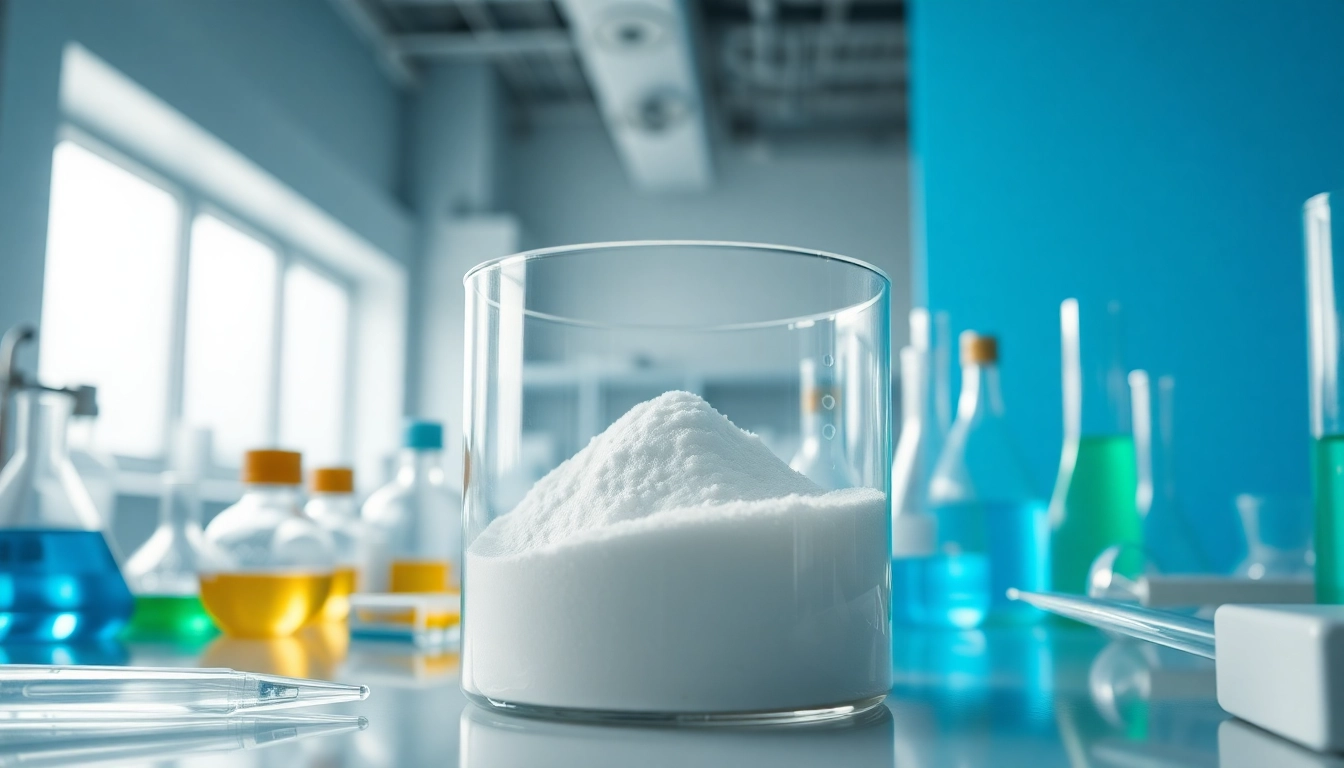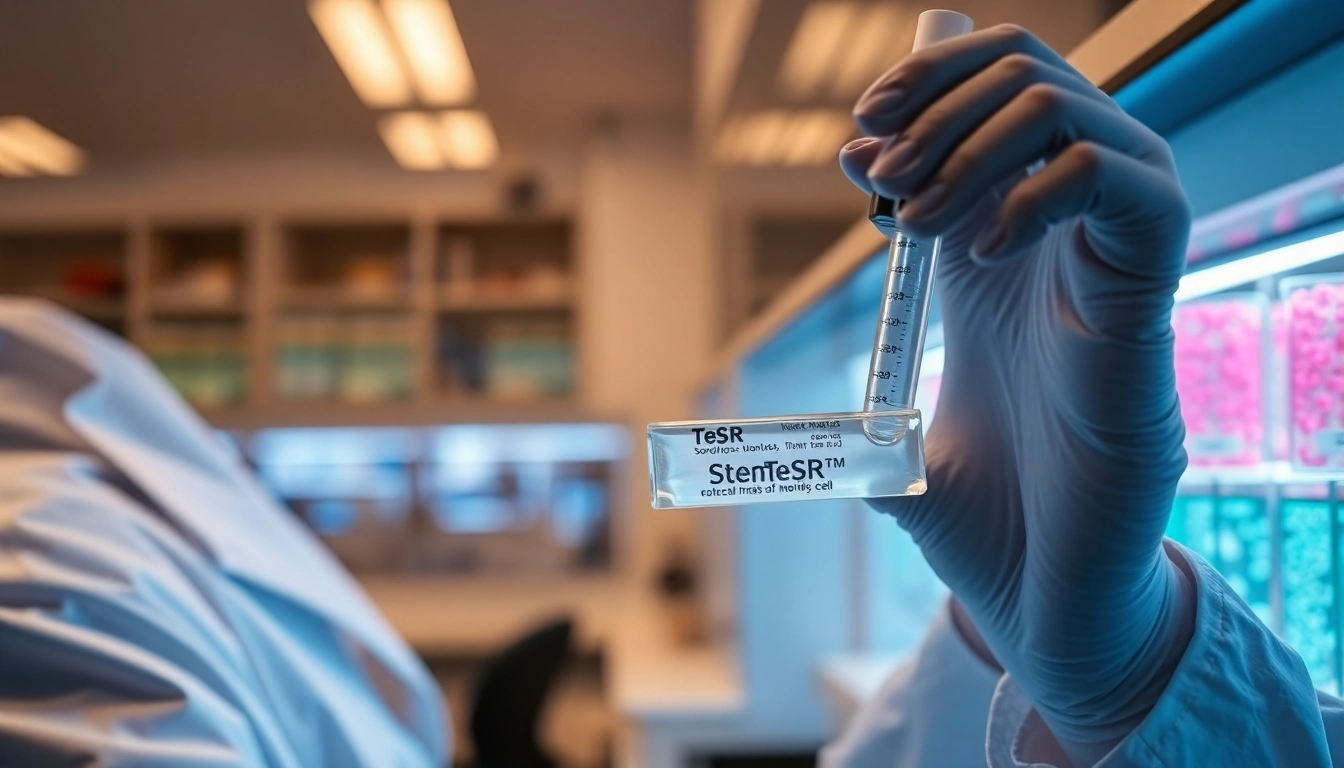Introduction to Methyl Hydroxyethyl Cellulose
Methyl Hydroxyethyl Cellulose is a widely used compound in various industries due to its unique properties and versatility. Characterized by its thickening, binding, and film-forming abilities, this cellulose derivative plays a crucial role in enhancing the performance and quality of numerous products. From construction materials to personal care formulations, understanding Methyl Hydroxyethyl Cellulose is essential for those involved in its applications. Its significance is underscored by its ability to improve the stability, texture, and efficacy of products, making it a valuable component across multiple domains. For more insights regarding Methyl Hydroxyethyl Cellulose, visit Methyl Hydroxyethyl Cellulose.
What is Methyl Hydroxyethyl Cellulose?
Methyl Hydroxyethyl Cellulose (MHEC) is a non-ionic, water-soluble cellulose ether. It is synthesized through the etherification of cellulose, which involves the substitution of hydroxyl groups with methyl and hydroxyethyl groups. This modification enhances the solubility of cellulose in water, allowing it to dissolve without forming a gel. The unique structure of MHEC provides it with several functional properties, including thixotropic behavior, high viscosity, and ability to form stable emulsions.
Chemical Properties and Composition
The chemical structure of Methyl Hydroxyethyl Cellulose includes functional groups that define its characteristics. MHEC molecules are made up of a backbone of glucose units derived from cellulose, which is modified by methyl and hydroxyethyl substituents. This modification not only enhances solubility in cold water but also improves the thermal stability of the compound.
Some key chemical properties of MHEC include:
- Viscosity: The viscosity of MHEC solutions can vary significantly depending on its molecular weight and concentration. Higher molecular weight grades yield thicker solutions, which can be modified further based on application needs.
- THIXOTROPY: MHEC exhibits thixotropic behavior, meaning it has a time-dependent shear-thinning property. This attribute is crucial for applications where easy application and spreading are desirable.
- pH Stability: Methyl Hydroxyethyl Cellulose is stable across a wide pH range, making it suitable for various formulations.
Historical Context and Usage
Methyl Hydroxyethyl Cellulose emerged in the mid-20th century as a recognized cellulose derivative, primarily used in construction and coatings. Its ability to improve the workability and stability of cement-based products made it a popular choice in the construction sector.
Over the decades, the applications of MHEC have expanded significantly. It is now a go-to ingredient in personal care products, pharmaceuticals, food products, and industrial formulations. As regulations around product safety have tightened, MHEC’s natural origin and safety profile have made it increasingly relevant in the manufacturing of bio-based and sustainable products.
Applications of Methyl Hydroxyethyl Cellulose
Industrial Uses in Construction
In the construction industry, Methyl Hydroxyethyl Cellulose is widely utilized as a thickener and binder in various formulations, including adhesives, tile-setting mortars, and stuccos. Its primary role is to improve the workability and consistency of these mixtures. MHEC provides the following benefits in construction applications:
- Improved Adhesion: MHEC enhances the adhesive properties of cement-based materials, ensuring better bonding to substrates.
- Water Retention: By reducing the evaporation rate of water from the surface, MHEC helps to maintain optimal moisture levels, crucial for effective curing.
- Performance Improvement: MHEC modifies the rheological behavior of construction materials, allowing for easier application and reducing the occurrence of cracks and defects.
Cosmetic Formulations and Benefits
The cosmetic and personal care industry greatly benefits from the use of Methyl Hydroxyethyl Cellulose, as it serves multiple purposes. In formulations such as gels, creams, and lotions, MHEC helps achieve desired product characteristics:
- Thickening Agent: MHEC acts as a thickener, providing the desired viscosity to the products, thus offering a more luxurious feel during application.
- Emulsifier: In emulsions, MHEC stabilizes mixtures of oil and water, ensuring that cosmetic products maintain their intended consistency without separation.
- Skin Conditioning: MHEC has moisturizing properties, which help improve the skin feel of products and enhance their performance.
Food Industry Applications
Methyl Hydroxyethyl Cellulose is also used in the food industry, where it serves as a thickening, gelling, and stabilizing agent. Its applications include:
- Texture Modifier: In food products such as sauces, dressings, and dairy items, MHEC is used to modify and enhance texture, providing a creamy mouthfeel.
- Fat Replacer: MHEC can mimic the properties of fats, allowing for lower-calorie formulations without sacrificing quality.
- Stabilizer: MHEC helps stabilize emulsions and prevents separation in food formulations, particularly in salad dressings and sauces.
Benefits of Using Methyl Hydroxyethyl Cellulose
Improving Product Stability
The incorporation of Methyl Hydroxyethyl Cellulose into product formulations significantly improves stability. Its ability to stabilize emulsions and foams extends the shelf-life of products, reducing the risk of separation and ensuring consistent quality over time.
Enhancing Texture and Viscosity
Methyl Hydroxyethyl Cellulose provides excellent thickening properties, which are instrumental in achieving smooth and creamy textures in various applications. Whether in cosmetics or food products, MHEC enhances the sensory experience, making products more appealing and effective.
Environmental Considerations and Safety
An important feature of Methyl Hydroxyethyl Cellulose is its safety profile. As a plant-derived material, it poses minimal risk to human health and the environment. This characteristic aligns with the growing demand for eco-friendly formulations, making MHEC attractive for sustainable product development.
Challenges in Working with Methyl Hydroxyethyl Cellulose
Handling and Storage Issues
While Methyl Hydroxyethyl Cellulose holds many advantages, there are challenges associated with its handling and storage. MHEC can absorb moisture from the air, leading to clumping and reduced efficacy. Therefore, it is crucial to store MHEC in dry, cool conditions and to ensure that containers are tightly sealed to maintain product integrity.
Potential Market Limitations
Despite its diverse applications, there are limitations to the market penetration of Methyl Hydroxyethyl Cellulose. It competes with various synthetic alternatives, which may offer performance benefits at a lower cost. Additionally, the awareness and understanding of its benefits may not be widespread among manufacturers, hindering wider adoption.
Regulatory Compliance Considerations
Adherence to regulatory standards is essential when formulating products with Methyl Hydroxyethyl Cellulose. Depending on the application, manufacturers must ensure that MHEC complies with relevant food safety, cosmetic safety, and industrial regulations. This entails thorough testing and documentation to confirm safety and quality.
Best Practices for Implementation
Optimizing Formulations with Methyl Hydroxyethyl Cellulose
To maximize the potential benefits of Methyl Hydroxyethyl Cellulose in formulations, it is critical to optimize its concentration and integration method. The following practices can enhance performance:
- Gradual Dispersion: Introduce MHEC slowly into the formulation while stirring to prevent clumping and ensure even distribution.
- pH Adjustment: Ensure the final product’s pH is compatible with MHEC to prevent precipitation or loss of viscosity.
- Temperature Considerations: Solubilize MHEC in water at elevated temperatures for better integration, but avoid excessive heat that could degrade its properties.
Measuring and Testing Performance
Conducting thorough testing to assess the performance of formulations containing Methyl Hydroxyethyl Cellulose is essential. Standard tests should include:
- Viscosity Measurements: Use a viscometer to assess the thickness of solutions at various temperatures and shear rates.
- Stability Testing: Evaluate the stability of emulsions and foams over time to ensure consistent product quality.
- Application Performance: Conduct sensory evaluations and user tests to gather feedback on product usability and consumer acceptance.
Future Trends and Innovations
Looking ahead, the future of Methyl Hydroxyethyl Cellulose appears promising, with ongoing innovations focusing on bio-based and sustainable formulations. As industries aim to reduce their environmental footprint, the demand for natural, versatile ingredients like MHEC is expected to grow. Further research into modifying its properties to enhance performance in specific applications is likely to foster new opportunities.














Leave a Reply